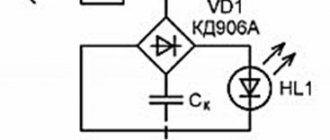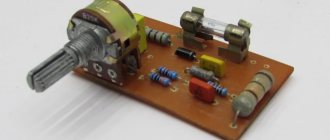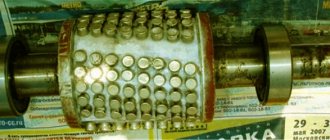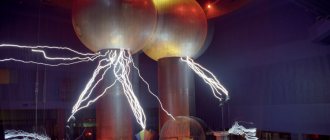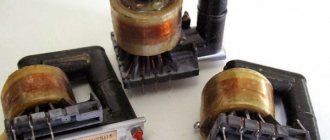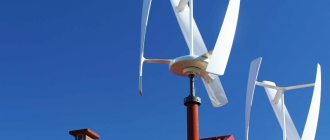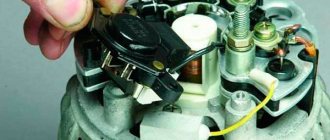220 V water generator: how to make it at home?
Various methods are used to heat private houses. They differ from each other in heat transfer and type of energy carrier. In the process of using water heating, different types of boilers are used depending on the type of fuel:
- Solid fuel - in this case, solid fuel is used for operation.
- Electric - in such boilers, heat is converted by converting electricity.
- Gas - in such boilers, heat transfer occurs at the moment of gas combustion.
A water generator is a container of water containing electrodes for converting water into oxygen and hydrogen. To make your own water generator, you will need:
- stainless steel sheet;
- plexiglass plate;
- rubber tubes for water supply and gas outlet;
- rubber sheets;
- a voltage source that should provide a current of 5–8 A.
To assemble a water generator, you need:
- First cut the stainless steel plates into rectangular sheets.
- Cut off the corners on them in order to further tighten the device with bolts.
- In each plate, drill a 5 mm hole at a distance of 3 cm from the bottom of the plate for water inlet and outlet.
- In addition, a wire should be soldered to the plates to connect it to the power source.
Before assembling the generator from rubber, rings with a diameter of 200 × 190 mm are first cut. Prepare two plexiglass plates with dimensions of 200 × 200 mm, and you need to pre-drill holes in them on all sides for M8 bolts.
They start assembling the water generator like this: first they put the first plate, then a rubber ring coated with sealant, and so on according to the same pattern. After this, the entire structure is tightened with bolts and plexiglass plates.
In the latter you need to drill holes: in one plate at the bottom for liquid to pass through, in the other at the top for gas removal. A fitting should be inserted there. PVC tubes must be placed on these fittings.
Reference! To prevent gas from getting back into the gas generator, a water seal must be installed on the way from it to the burner.
The advantages of this type of heating include the following:
- ecological type of heating, because when hydrogen is burned in oxygen, water appears in the form of steam, and there are no emissions of harmful substances into the atmosphere;
- you can connect the generator to an existing water heating system without modification;
- the installation operates silently, so it does not require any special room.
The disadvantages of a water generator include:
- Hydrogen has a high combustion temperature, so a simple boiler can quickly break down.
- You must be careful when working with Brown's gas as it is explosive.
- When operating a water generator, it is necessary to use distilled water.
Conclusion
Providing yourself with electricity without connecting to the grid is not the most difficult task.
But, having received dividends in the form of savings, relief from the consequences of disasters and energy independence, you need to remember that electricity is a dangerous thing.
During the manufacturing and use process, we must not forget about safety. Be sure to check the quality of insulation and grounding. In this case, your device will only bring benefits and positive emotions.
Wood-burning home appliance
Self-assembly of such a model is not difficult. When creating it, you need to buy or remove a Peltier element from an old refrigerator. It is a thin-walled plate square. One of its panels is made of copper, and the other of nickel.
Contact clamps are attached to them and connected to the network. The operation of such a generator is that when current passes through metal surfaces, one side of it heats up and the other cools down.
When a solid fuel generator operates, the reverse method of action is used: one plate is heated by burning wood, and the other is cooled by a cooler and radiator connected to the unit. At this moment, an electric current is formed between the parts, which was what needed to be obtained.
In addition to the Pelte element, during the generator assembly process you will need:
- metal sheet for the body;
- a part that stabilizes voltage;
- cooler and radiator;
- heat-conducting paste;
- device for setting rivets;
- metal scissors;
- rivets, drill and soldering iron.
Help: after preparing all the necessary tools and materials, you can begin assembling the mechanism. There are ready-made sets of power tools on sale.
First you need to make a metal case in the shape of a cylinder. Holes for air intake should be installed at the bottom, and a stand with a container for water should be installed on top.
The radiator is secured with thermal paste on the cold side. The main heating element is attached to the other edge. During assembly, you will also need an electricity stabilizer with a USB connector. This device will create voltage and allow you to cook food and charge various electrical appliances. The stabilizing part must be insulated and soldered to the main element, taking into account the poles.
Upon closer examination of this device, there is one big flaw - the high price for many tourists and summer residents. But with frequent use, the cost is justified by the savings on fuel. Firewood is cheaper than diesel fuel and gasoline.
In addition, when operating such an electric generator indoors, you need to install a chimney. It releases combustion products into the atmosphere. But, despite these disadvantages, a wood-burning device also has advantages:
- capable of heating a house up to 50 cubic meters;
- can be used as a stove for cooking;
- the device is small in size, so it can be installed in small rooms;
- long service life;
- light weight;
- no noise during operation;
- economical use of fuel.
Types of electricity generators
Typically, a homemade generator at home is made on the basis of an asynchronous motor, magnetic, steam, or wood.
Option #1 - asynchronous generator
The device will be able to generate a voltage of 220-380 V, based on the performance of the selected motor.
To assemble such a generator, you only need to start an asynchronous motor by connecting capacitors to the windings.
A generator based on an asynchronous motor self-synchronizes and starts rotor windings with a constant magnetic field.
The motor is equipped with a rotor with a three-phase or single-phase winding, a cable entry, short-circuit devices, brushes, and a control sensor
If the rotor is of a squirrel-cage type, then the windings are excited using the residual magnetization force.
Option #2 - magnetic device
A commutator, stepper (synchronous brushless) motor and others are suitable for a magnetic generator.
A winding with more poles increases the efficiency. In comparison with the classical circuit (where the efficiency is 0.86), the 48-pole winding makes it possible to increase the generator power
During the assembly process, magnets are attached to a rotating axis and installed in a rectangular coil. The latter generates an electrostatic field when the magnets rotate.
Option #3 - steam generator
For a steam generator, a furnace with a water circuit is used. The device operates using the thermal energy of steam and turbine blades.
To make your own steam generator, you will need a furnace with a water (cooling) circuit
This is a closed system with a massive, non-mobile plant that requires control and a cooling circuit to convert steam into water.
Option #4 - wood-burning device
For wood-burning generators, stoves are used, including camp stoves. Peltier elements are attached to the walls of the furnaces and the structure is placed in the radiator housing.
The principle of operation of the generator is as follows: when the surface of the conductor plates is heated on one side, the other is cooled.
To make your own wood-burning generator, you can use any stove. The generator operates using Peltier elements that heat and cool conductor plates
An electric current appears at the poles of the plates. The greatest difference between plate temperatures is provided by the generator with maximum power.
The unit is more efficient at sub-zero temperatures.
From an electric motor
To convert an electric motor into a functioning generator, it is necessary to use non-polar capacitor banks, so it is better not to use electrolytic capacitors.
You can connect a capacitor in the motor using two schemes:
- “Star” - with its help you can generate at the lowest number of revolutions, but with a low output voltage.
- “Triangle” - operates at high speeds, so it generates more voltage.
Expert opinion
Ivan Zaitsev
Lighting specialist, consultant in the building materials department of a large chain of stores
You can create your own device from a single-phase motor, provided that it is equipped with a rotor. To start development, you need to use a phase-shifting capacitor. Single-phase is not suitable for conversion.
It’s easy to create a generator; the main thing is to have all the necessary components on hand in the form of:
- asynchronous motor;
- tachometer;
- capacitor containers;
- the capacitor itself;
- set of tools.
During the assembly process you will need to perform the following steps:
- First you need to connect the electric motor to the network and start it. Next, use a tachometer to determine its rotation speed.
- Having found out the speed, you need to add another 10% to the obtained value.
- Next you need to select a capacitance for the capacitors.
Important! If the capacity is large, the generator will heat up quickly. You need to choose ones that will provide the required rotation speed.
A generator with a squirrel-cage rotor creates a high voltage, so if you need 220 V, you will need to install a step-down transformer.
The main advantage of this device is that the existing capacitors do not require maintenance, because all the energy of the rotor is transferred from the magnetic field of the rotor and the current generated during the operation of the generator.
But there are also some disadvantages:
- During operation, there is no way to ensure industrial parameters of the electric current generated by the generator.
- High sensitivity even to small differences in workloads.
- When there is a high load on the generator, there is a shortage of electricity, after which recharging becomes impossible and the generator stops working.
Operating principle of an electric generator
The generators operate on the principle of electromagnetic induction, when current is induced in a closed loop due to its intersection with a rotating magnetic field. The magnetic field is created by windings or permanent magnets.
When the electromotive force from the commutator reaches the closed circuit and the brush nodes, the rotor begins to rotate together with the magnetic flux. This creates tension in the spring-loaded brushes pressed against the plate-type commutators.
Next, the electric current is transmitted to the output terminals, passes into the network, and spreads through the generator.
They use alternating and direct current generators. The alternating current electric generator is small in size, does not generate eddy currents, and at the same time has the ability to operate in extreme temperatures. A device with direct current does not require careful monitoring and has a significant number of resources.
Structurally, the generator includes: brushes with brush holders, a commutator, an armature winding, an armature, a starter, contact rings, a starter winding, a rotor, a housing, a fan, a drive and a frame
The alternating current generator can be either synchronous or asynchronous. The first is with a permanent electric magnet and the number of stator rotations is equal to the rotor, forming a magnetic field. The advantages of such a generator are a consistently high voltage; the disadvantages include current overload due to an excessive load on the regulator, which increases the rotor winding current.
Design of an asynchronous generator: squirrel-cage rotor, stator. When the rotor rotates, the generator induces a current, and the magnetic field produces a sinusoidal voltage.
Homemade from magnets
The magnetic generator is slightly different from the previous one. For example, it does not require the installation of compensating batteries. The magnetic field that creates electricity in the stator winding is formed thanks to neodymium magnets.
How to create this type of generator:
- You need to unscrew the existing engine covers.
- Pull out the rotor.
- The rotor needs to be sharpened, and the top layer of the required thickness must be removed. It is difficult to do such a procedure on your own without turning equipment.
- Make a template for round magnets on a piece of paper. You need to select the required size depending on the size of the rotor. Next, attach the created template to the rotor and install the magnets with their poles and at an angle of 20 degrees to the rotor axis.
- You should get four groups of strips with a distance of two magnet diameters, and between them in the group there is one diameter. Due to this arrangement, the rotor will not stick to the stator.
- After installing all the magnets, you need to fill the rotor with epoxy resin. When it dries, you should cover the cylindrical part with fiberglass and again with resin. Thanks to this fastening, the magnets will be firmly fixed.
- When drying the rotor, you can put it in place and screw on the two engine covers.
Many experts believe that a pendulum with an axis 6 m long will be sufficient to provide electricity to a country house.
In this case, the electromagnets will push the neodymium magnets with a force of more than 100 kg. The advantages of this device are that it does not depend on the sun and wind. In addition, the generator does not require expensive batteries like other power generators.
But while using it, some problems cannot be ruled out:
- as the pendulum moves in the opposite direction, the polarity of the magnets may change;
- when the pendulum hangs at the top point, a ripple effect may form in the network.
Attention! This project cannot be implemented with ferrite magnets due to their technical characteristics.
Synchronous and asynchronous generators
Synchronous types of generators are relatively complex in their design. In addition, these installations suffer from voltage surges, which reduces current production. However, asynchronous generators are significantly simpler in design. In addition, they have excellent technical parameters.
A synchronous generator has magnetic coils located directly on the rotor. This solution makes it difficult for the rotor to rotate. On the other hand, the rotor that an asynchronous generator is equipped with is similar in design to a typical flywheel.
This difference is also reflected in the efficiency. In a synchronous generator, energy losses reach 11 percent. At the same time, in an asynchronous generator they are limited to 5 percent.
Along with this, asynchronous models have a number of other advantages:
- They have a relatively reliable housing that protects the mechanism itself from contact with spent fuel or moisture, which reduces the need for periodic maintenance;
- They are designed for use as a power source for incandescent lamps, computers and other equipment, as well as for welding machines, that is, for devices with significant sensitivity to sudden voltage surges
- The design of DC generators of this type ensures a long service life; all its elements are distinguished by high reliability indicators.
Gasoline modification
There are two designs of a self-made gasoline generator based on an engine from a trimmer and a generator from a car.
To assemble the first generator you will need:
- gasoline engine from a trimmer, preferably 4-stroke;
- working car generator;
- 12 V battery, not necessarily powerful, it will only be used for starting; Without it, the generator will not be able to generate electricity, since the collector will need to be supplied with an initial voltage for the first excitation.
The direct feed device is simple and straightforward. The only difficult stage is preparing the shaft for the drill chuck.
- First, the shaft is cut and sharpened on a machine, and then threaded to fit the chuck.
- Then the cartridge is screwed into which the shaft of the electric generator is clamped.
- Then everything is attached to a wooden stand.
- Now you need to start the gasoline engine and connect the generator to the battery. A voltmeter with a light bulb will check its operation.
The second method of assembling the generator is somewhat similar to the first, only a belt is used for the rotation process. A pulley is attached to the trimmer shaft, and everything is connected with a belt. Next, everything is attached to a wooden base. The trimmer is started and the operation of the device is checked.
As for the advantages of gasoline devices, there are many of them:
- The scope of use of the device is practically unlimited. It is used to supply power to a country house, summer cottage, or during emergency power outages in hospitals, pharmacies and retail outlets.
- The gasoline device is small in size and weight. Its small size ensures mobility: it is convenient to take with you and transport in the trunk.
- Low noise levels distinguish gasoline devices from diesel or gas ones.
- Gasoline generators are economical in terms of fuel consumption; it can be purchased at any gas station.
The disadvantages of this type of generators include:
- The main disadvantage is the high price. Gas and diesel are cheaper. Therefore, frequent use of such a device is not financially profitable.
- It has a low duration of continuous operation, which does not exceed 8 hours. But this time is enough to supply power or carry out work on the site.
Tips for use
For long-term and safe operation of the DC motor and inverter, no special conditions are required, except perhaps protection from moisture and voltage surges.
As for the lithium-polymer battery, it is unacceptable to deeply discharge it (less than 3.3 V) and in no case allow it to overheat above 60 degrees Celsius. Such devices are also charged using specialized devices that do not allow overcharging, and before using in the cold, be sure to warm them up at room temperature.
Fuel engines also require compliance with operating rules: correct selection of the combustible mixture, cleaning of air and fuel filters, preventing engine overheating, etc. In an enclosed area, exhaust gases from such an engine must be ventilated.
As for the rest, such equipment, assembled with your own hands, can last for a long time, supplying precious electricity in the country, fishing, or just on vacation outside the city!
Vertical wind power generator
It is not difficult to make a wind device with a vertical axis of rotation with your own hands. It is enough to buy the required components, assemble them correctly and install the unit in the chosen location.
To make a wind device you will need the following materials:
- The axial mast is a supporting structure in the form of a pyramid, having a height of 5 meters. The generator and blades are attached to it.
- The blades catch the wind currents.
- The stator includes phases from coils.
- The rotor is the moving part of the windmill.
- The controller slows down the device when it develops more power.
- The inverter produces alternating current and the battery stores the energy.
To make the blades you will need high-quality plastic. Even plastic pipes will do. In this case, tin fragments are attached to each side of the pipe.
The rotor will require two ferrite disks with a diameter of 32 cm. For the stator, nine coils with 60 turns of copper should be made.
The mold for the coils should be made of plywood and lined with fiberglass.
You need to assemble a wind generator as follows:
- Make a hole in the top of the rotor for the pins.
- Make holes in the stator for fastening to the stand.
- Place the lower rotor disk on the stand with the magnets facing up.
- Here, install the stator and secure it to the plate with studs.
- Cover the structure with another disk.
- By rotating the pins, you should ensure that the upper and lower disks are evenly brought together, after which the pins and the plate are carefully removed.
- Secure the generator with nuts.
- Screw the finished device to the axial mast.
Electricity is started last: the energy from the device goes to the controller, is then collected on the battery and converted into alternating current by the inverter.
A vertical generator turns wind into an energy resource. To work well, it does not need additional devices that determine the direction of the wind.
Its maintenance does not require devices to ensure safe repair work.
Useful! The minimum number of moving parts makes this installation reliable and stable.
The device operates quietly, does not disturb neighbors and owners, does not produce harmful emissions into the atmosphere and reliably serves for many years.
Required parts and tools
You will need the following materials to make an electric generator and instructions for them:
- The simplest option is a ready-made stator with a winding. It can be borrowed from old household appliances, or purchased inexpensively at repair shops.
- A two-pole capacitor responsible for creating an electromagnetic field.
- If the output power is planned to be variable, a transformer will be needed.
- Insulating tape, wires.
- Terminals and other fastenings.
- Tachometer for measuring rotation speed.
- Source of energy.
- Additional accessories and control sensors - to suit your taste.
When creating a high-power generator capable of providing electricity to a country house, it is important to remember safety and first read the relevant literature. Electricity is no joke.
Device classification
The classification of DC generators involves the identification of two main types, namely:
- Self-excited devices;
- And independent excitation of the windings.
Self-excitation involves the use of electricity in the operation of the machine, which is obtained from itself. At the same time, generators with independent excitation require power to start their operation.
Both batteries and other external devices can act as current sources. If the generators have low power, then permanent magnets can be used, due to which a magnetic flux occurs.



